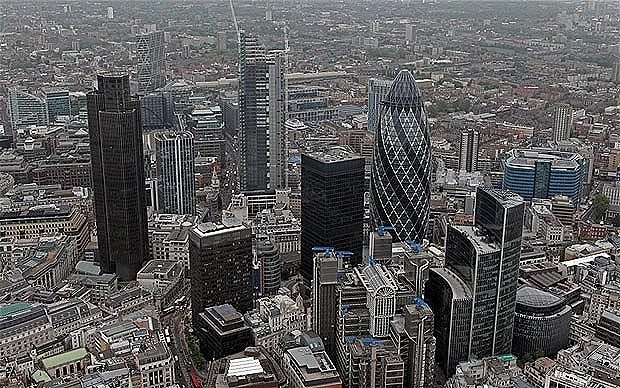Stocks Flows of London - Finance, Transport and Power
FC-01x Future Cities (1st Run) - Exercise 2: "Stocks and Flows"

Uploaded on 2014-11-29 by dt00073
1. Commuting Workforce 2. Transportation infrastructure 3. Electricity I identified these because they are interconnected and reliant on one another. Each one is critical in some way, though for at least one of these, the city maybe able to adapt if this was taken away. London is a financial capital of the world, at its foundations it relies on its educated workforce to maintain this. However, this educated workforce has been priced out of housing in the city and a large amount of people commute into the city. Each day many thousands of commuters come into London via rail. ![The City of London, one of the world's financial centres][1] One of the most common methods of transportation is the London Underground, when a commuter comes into London through any one of the major rail hubs, they then transfer to the underground. The extensibility of this network versus other methods such as buses makes it the most favourable for commuters. Hence, this is where the interconnectivity between the stocks and flows occurs. The City would run significantly less efficiently without this flow of transportation, affecting the flow of commuters and hence flow of money into the city. Businesses would ultimately suffer and lose interest in investing in the city. ![London Rush Hour][2] Finally, the 3rd most important stock/flow is power/selectivity. Powering a city like London takes phenomenal resources and there requires a infrastructure to enable flow of electricity from the power sources located in numerous places away from the city and on the outskirts. Electricity is critical to almost every single process in a city. In a report by the City of London Corporation, City property associate with 'South East Economics' they state: ''The Greater London Authority (GLA) estimates that by 2032, Central London will benefit from around 20% growth in employment, and will require up to 3 million square metres of new office floor space - the equivalent of 27 buildings the size of The Shard. Having the right power infrastructure is a pre-requisite for such growth, and the way in which this infrastructure is supplied, managed and regulated has a crucial bearing on the ease with which new development can take place. The City of London Corporation, London First and the City Property Association jointly commissioned this research to examine the issues around electricity distribution in central London, given its importance not just to individual developers, but to the City overall. '' So not only is the delivery of electricity a critical flow, but so is the regulation. As an expansion occurs in the city, as will an influx on the flow of commuters, directly affecting the requirement of another flow. Clearly the expansion stated is beneficial, it brings more corporate interest and investment to the city, but to ensure this is possible and sustainable, so the benefits can be reaped, the infrastructure for which flows occur through must be considered. [1]: http://i.telegraph.co.uk/multimedia/archive/01782/London_1782436b.jpg [2]: http://eandt.theiet.org/magazine/2013/01/images/640_rush-hour.jpg